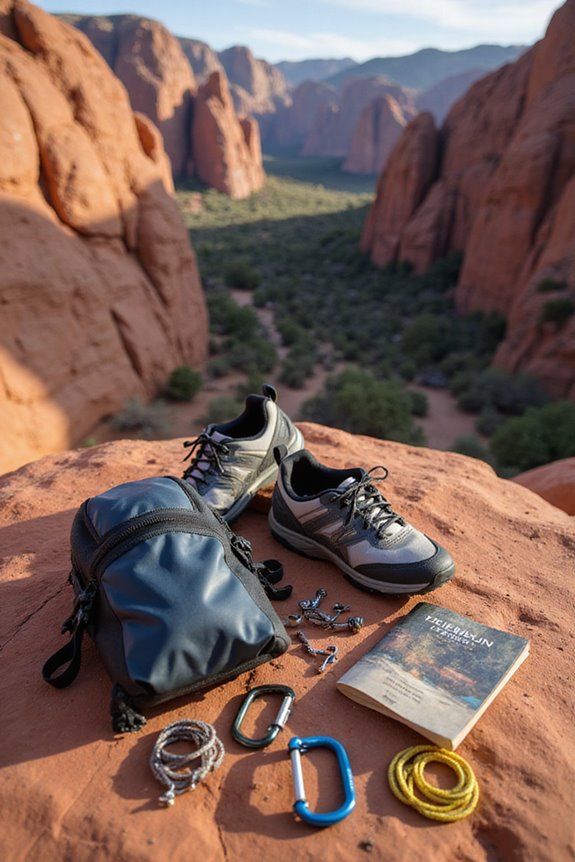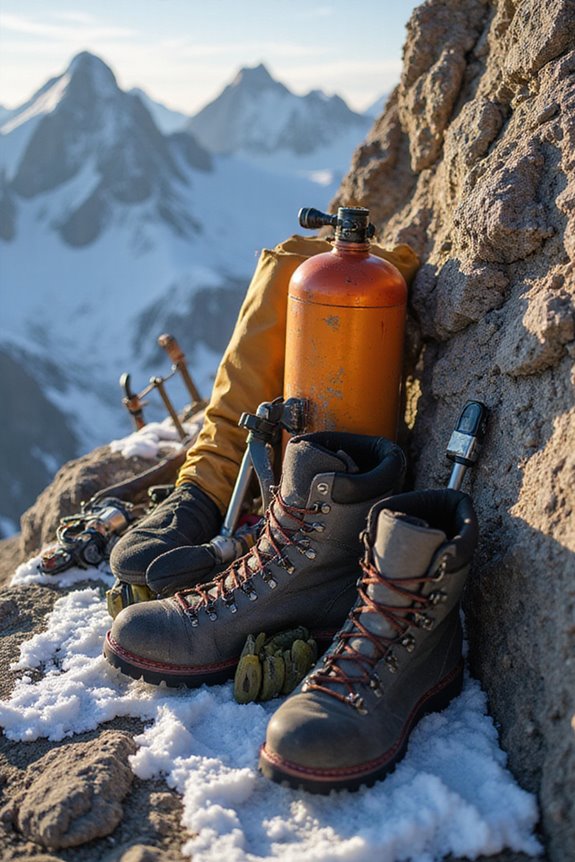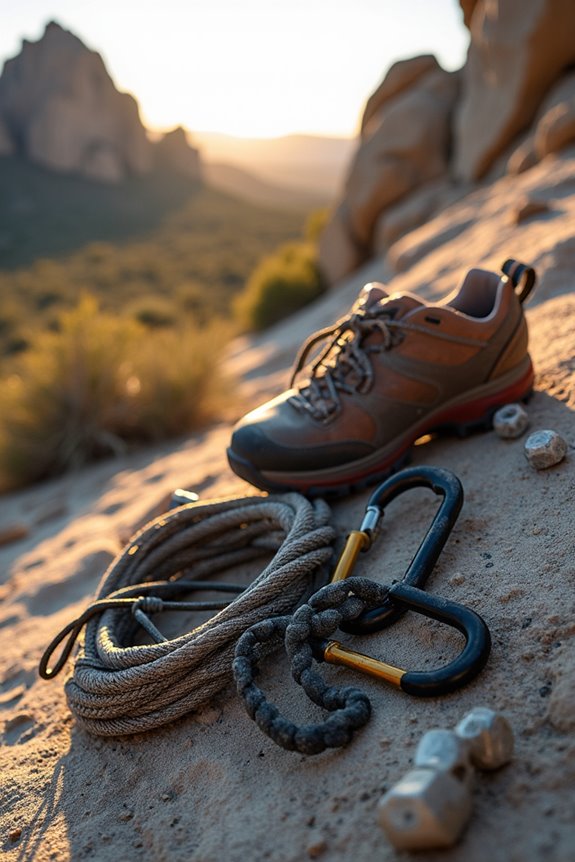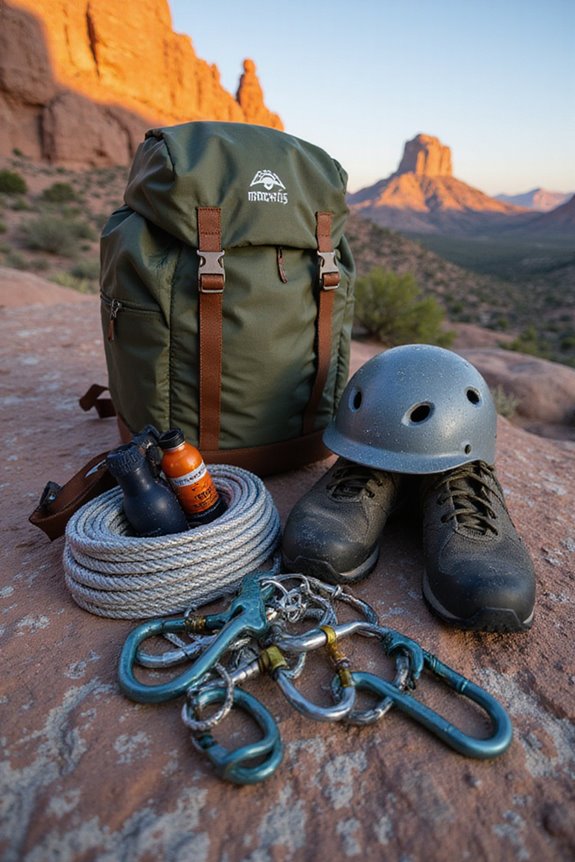Choosing rock climbing is an exciting adventure, and we’ve got to reflect on a few things to find what fits us best! First, let’s figure out if we’re drawn to the strength of sport climbing or the intensity of bouldering. Equipment like snug climbing shoes and reliable harnesses will be our trusty sidekicks on this journey. And don’t forget – safety is key! Stick around, and we’ll explore essential tips to elevate our climbing game!
Key Takeaways
- Determine your climbing goals and motivations to choose between styles like sport climbing, bouldering, or indoor/outdoor settings.
- Evaluate your skill level and safety awareness, ensuring you have the necessary techniques mastered for injury prevention.
- Consider the social aspects of climbing, and engage with local climbing communities for support and camaraderie.
- Research and select appropriate equipment, focusing on climbing shoes, harnesses, and safety gear that suit your chosen style.
- Be mindful of environmental impacts; practice sustainable climbing and adhere to “Leave No Trace” principles to protect natural spaces.
Understanding Different Types of Rock Climbing
When it comes to rock climbing, we’re diving into an exciting world bursting with different styles and techniques that all promise a unique thrill! Two popular choices are sport climbing and bouldering. Sport climbing focuses on strength and endurance, using permanent anchors like bolts for protection. It lets us push our limits—imagine gripping awkward holds while cruising up a well-bolted route! We can take our skills to new heights with lead climbing, too.
Bouldering, on the other hand, is about short, intense “problems.” With a crash pad below, we challenge ourselves to find the perfect bouldering techniques while enjoying the freedom of not being tied to a harness. Both styles offer pure exhilaration—let’s embrace the climb!
Factors to Consider When Choosing a Climbing Style

As we contemplate our next rock climbing adventure, it’s essential to plunge into the factors that can make or break our experience! First, let’s consider whether we want the controlled environment of an indoor gym or the wild allure of outdoor cliffs—both offer unique thrills.
Next, think about our skill levels and personal motivation: beginners might thrive in the social scene of sport climbing, while seasoned climbers could relish the solitude of trad routes.
Safety’s another biggie; each style comes with its risks, so we should ask ourselves how much adrenaline we’re really after. Finally, let’s tap into the climbing community! Connecting with fellow climbers can elevate our journey, making each adventure memorable. Ready to choose our style? Let’s go!
Essential Equipment for Rock Climbing
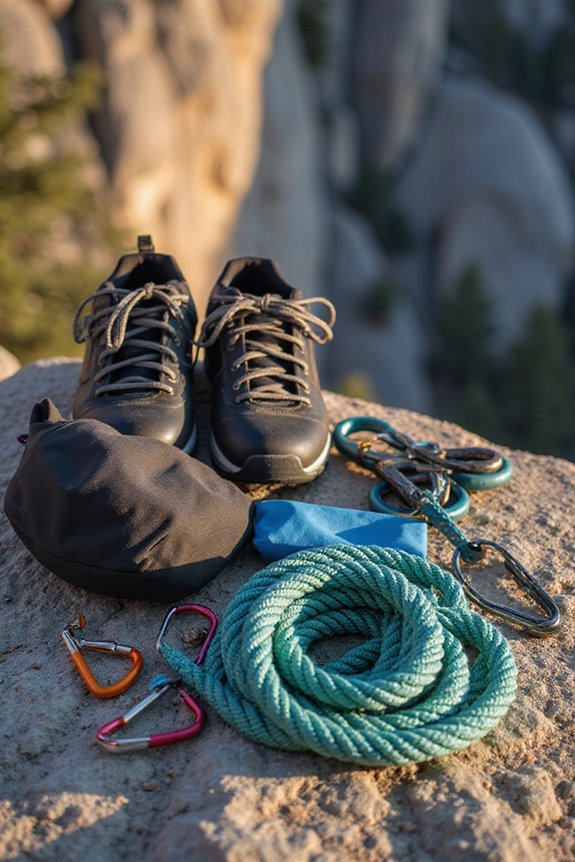
Gear up, adventurers! The right equipment will elevate our rock climbing experience to new heights. First, let’s chat about climbing shoe types. A snug fit is key—opt for aggressive shoes for technical climbs or neutral styles for all-day wear. Those sticky rubber soles? They’re our best friends when it comes to traction!
Next, we’ve got harness features. Choose an adjustable harness that fits like a glove—it should be comfy but very secure. Padded waistbelts and gear loops make organizing our gear a breeze. And don’t forget that our trusty belay devices and colorful carabiners keep everything connected safely.
Ready to embrace the thrill of the climb? Let’s conquer those crags together!
Safety and Skill Requirements
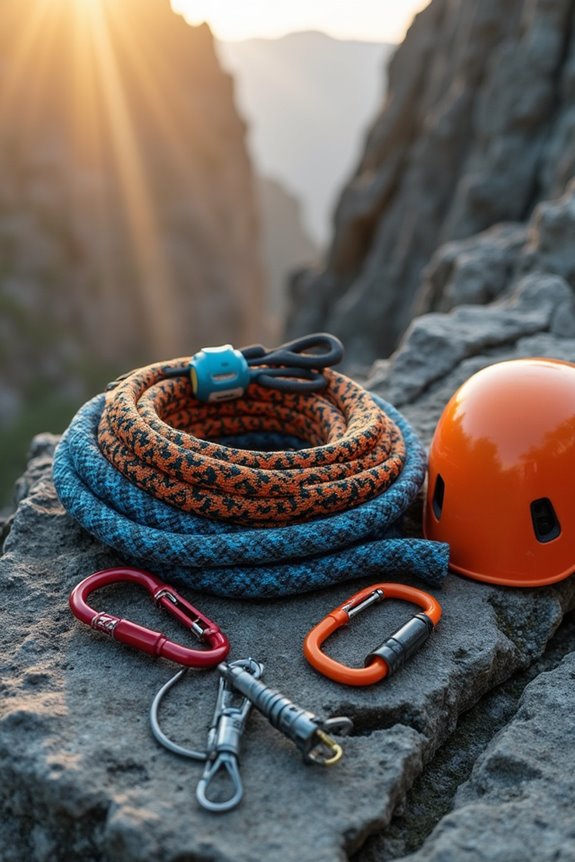
While climbing might seem like pure adrenaline-fueled fun, understanding safety and skill requirements is vital for keeping our adventures enjoyable and injury-free. We should prioritize injury prevention by mastering proper climbing and belaying techniques. Remember, most injuries occur from simple mistakes like rappel errors or improper gear use!
Training techniques play a significant role; it’s all about keeping our skills sharp and ready for anything. Helmets? They’re non-negotiable—just as important as our love for the mountains. New climbers, don’t worry; those heart-pounding heights will get easier with practice!
Let’s embrace the thrill while respecting safety protocols. The freedom of the climb is exhilarating, but we can’t ignore that safety net—it’s what lets us keep climbing again and again!
Environmental and Ethical Considerations
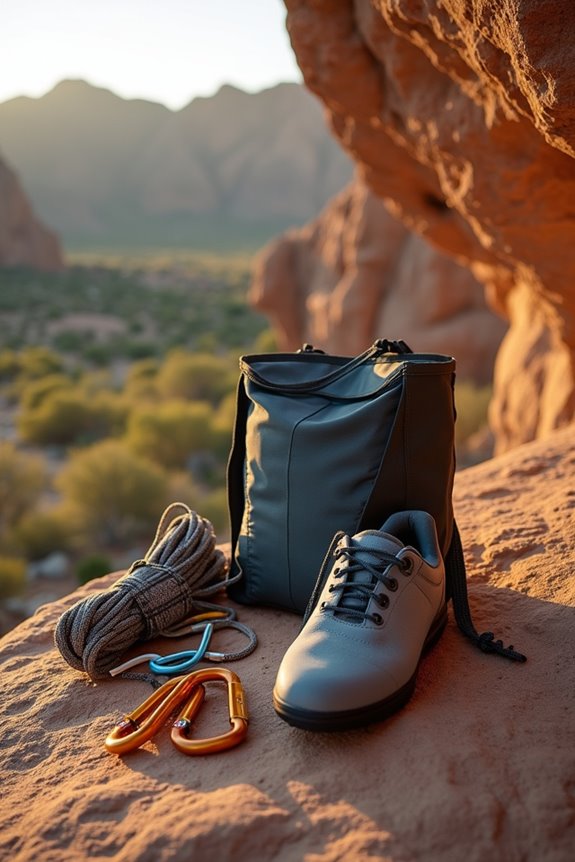
Rock climbing and nature—what a duo! But we need to be mindful of our impact. As we embrace the freedom of the crag, let’s commit to sustainable practices that preserve these beautiful landscapes for future climbers. We’ve all seen the effects of soil compaction and chalk residue, which harm local ecosystems.
Ethical climbing is about respecting wildlife and avoiding sensitive areas. So, let’s follow “Leave No Trace” principles, minimizing our footprints and supporting conservation efforts.
We’re adventurers, but let’s be responsible ones! Next time we head out, carpool or choose eco-friendly gear to limit our carbon footprint. Together, we can keep our climbing community thriving while ensuring nature remains a place of wonder, not a casualty.
Tips for Route Selection and Progression
When we set out to conquer new climbing routes, knowing how to select the right one can make all the difference in our experience. First, let’s talk about route grading. Beginners, aim for those 5.7 or easier climbs; they’re our safe haven! As we gain confidence, we can leap into more technical routes, each one teaching us fresh climbing techniques.
Single pitch routes? Perfect for mastering belaying. Once we’re ready, multi-pitch journeys challenge our communication skills and teamwork. Don’t underestimate those unique wall features, either—overhangs and cracks might just become our best friends!
Frequently Asked Questions
What Is the Best Way to Train for Rock Climbing?
To train for rock climbing, we should combine climbing techniques with targeted strength training. By focusing on our skills and building core power, we’ll find that freedom in movement enhances our climbing experience profoundly.
How Can I Overcome Fear of Heights While Climbing?
Overcoming our fear of heights while climbing isn’t just about physicality; it’s a journey. By practicing fear management and employing mental techniques, we can transform trepidation into freedom, embracing every ascent with confidence and control.
What Nutrition Is Recommended for Climbers?
For ideal climbing performance, we should focus on carbohydrate sources like oats and fruits for energy, while ensuring adequate protein intake from lean meats and legumes for recovery. Fueling our bodies is key to freedom on the rock!
Do I Need a Climbing Partner or Can I Solo Climb?
We can certainly embrace the freedom of solo climbing, but we’ve gotta weigh climbing safety first. Choosing a partner enhances safety and support, allowing us to navigate risks while enjoying our climbing adventures together.
How Can I Maintain My Climbing Gear Effectively?
To maintain our climbing gear effectively, we need to prioritize regular gear inspections and use proper cleaning techniques. This freedom hinges on our commitment to safety, ensuring our equipment remains dependable for every adventurous ascent we take together.

